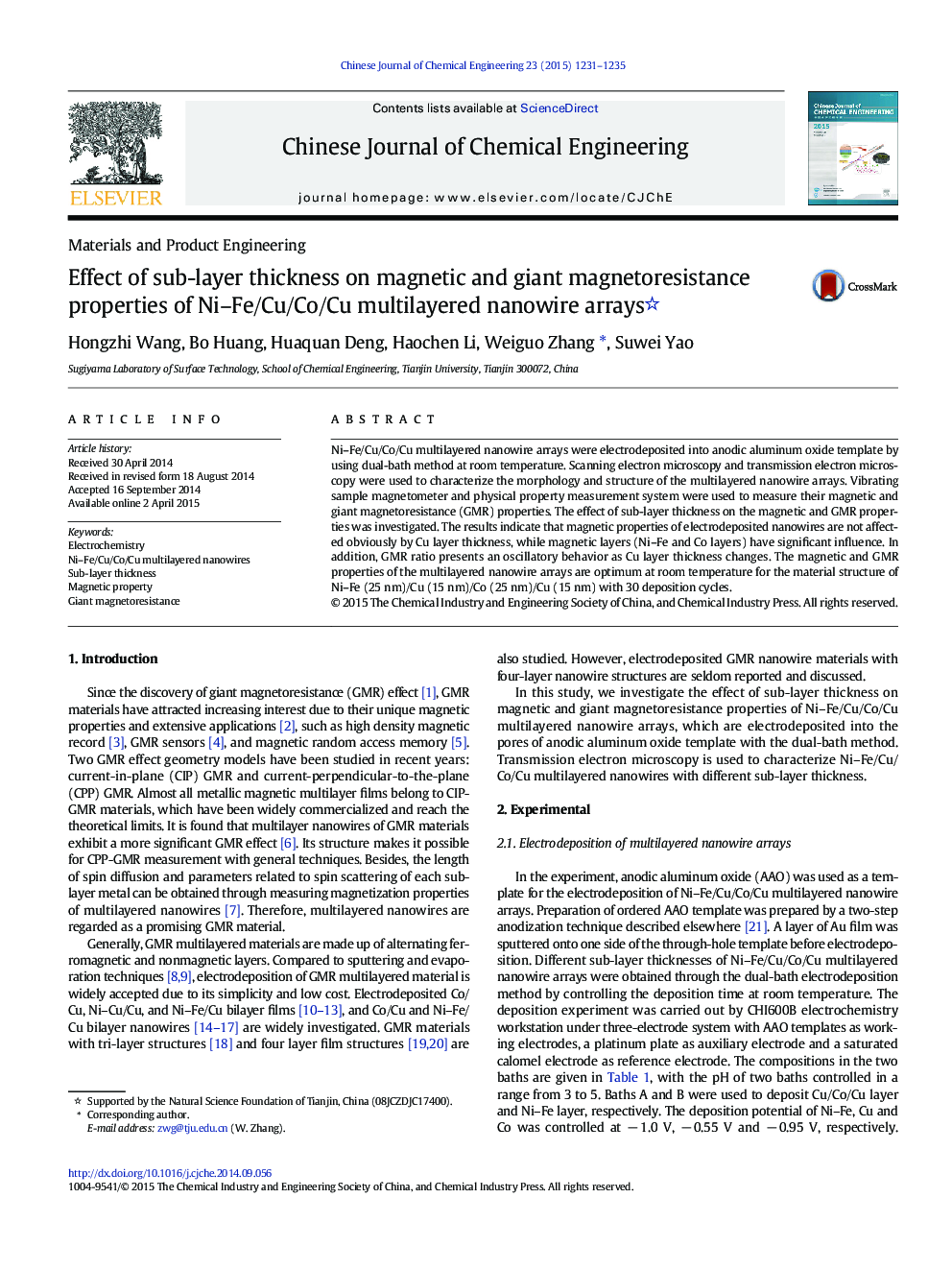| Article ID | Journal | Published Year | Pages | File Type |
|---|---|---|---|---|
| 167113 | Chinese Journal of Chemical Engineering | 2015 | 5 Pages |
Ni–Fe/Cu/Co/Cu multilayered nanowire arrays were electrodeposited into anodic aluminum oxide template by using dual-bath method at room temperature. Scanning electron microscopy and transmission electron microscopy were used to characterize the morphology and structure of the multilayered nanowire arrays. Vibrating sample magnetometer and physical property measurement system were used to measure their magnetic and giant magnetoresistance (GMR) properties. The effect of sub-layer thickness on the magnetic and GMR properties was investigated. The results indicate that magnetic properties of electrodeposited nanowires are not affected obviously by Cu layer thickness, while magnetic layers (Ni–Fe and Co layers) have significant influence. In addition, GMR ratio presents an oscillatory behavior as Cu layer thickness changes. The magnetic and GMR properties of the multilayered nanowire arrays are optimum at room temperature for the material structure of Ni–Fe (25 nm)/Cu (15 nm)/Co (25 nm)/Cu (15 nm) with 30 deposition cycles.
Graphical abstractNi–Fe/Cu/Co/Cu multilayered nanowire arrays were prepared by dual-bath electrodeposition method with anodic aluminum oxide template. Two baths were employed to deposit Cu/Co/Cu and Ni–Fe alloy layers separately. The sub-layer with different thickness can be prepared by changing the deposition time. The surface morphology of the electrodeposited multilayered nanowires was observed by scanning electron microscopy and transmission electron microscopy. GMR of the multilayered nanowire arrays exhibits an oscillatory behavior with the change of Cu layer thickness. The maximum room temperature GMR ratio of − 45.2% is achieved when multilayered nanowire structure is Ni–Fe (25 nm)/Cu (15 nm)/Co (25 nm)/Cu (15 nm) with 30 deposition cycles.Figure optionsDownload full-size imageDownload as PowerPoint slide
